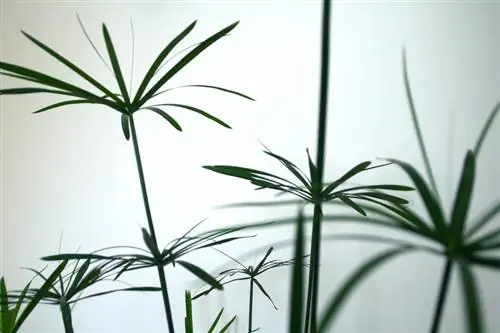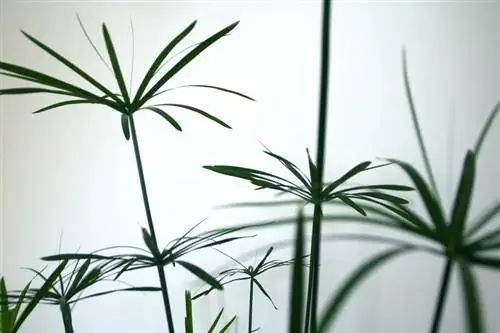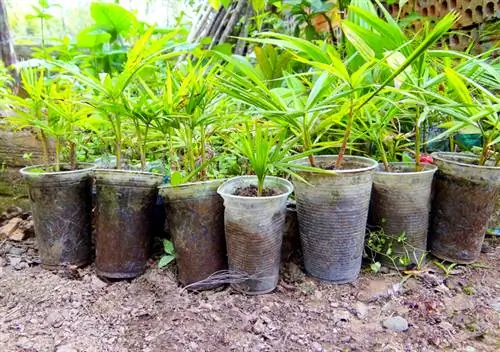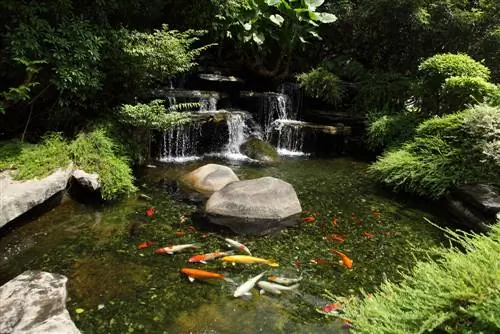- Author admin [email protected].
- Public 2023-12-16 16:46.
- Last modified 2025-06-01 06:02.
Whether on the edge of the garden pond, in the home aquarium, in a glass jug with water or more conventionally in a pot with soil - the Cyprus grass looks attractive everywhere. You can propagate it easily and quickly using cuttings!

How do I propagate Cyprus grass cuttings?
To propagate Cyprus grass cuttings, cut the cutting with a sharp knife and place it, leaf side down, in a glass of water. After about 1-4 weeks of root formation, plant the rooted offshoot in a bright location at 15-25 °C and high humidity.
The offshoots win
It is not uncommon for owners of Cyprus grass to observe a stalk with a tuft of leaves growing out of the crown. This is an offshoot. As a rule, offshoots only form in the larger species of this plant.
If you want to use such a cutting to propagate Cyprus grass, you can cut it off with a sharp and clean knife. The cut should be done in one go.
Have a glass of water ready
Continue, fill a glass or bowl with water - about half. The offshoot that you just cut off goes in there. Place it in the water with the leaf side down!
Since rooting can take a few weeks, it is advisable to change the water regularly. Ideally, this should be water that is low in lime and at room temperature. The purpose of changing the water regularly is to prevent algae formation.
Rooting successful - planting
If the container for rooting was in a bright and warm place, it doesn't take long for roots to form. Under optimal conditions, this can happen after just a week. Roots should have developed after 4 weeks at the latest. They are long, fine and white to slightly translucent.
Now it's time to plant:
- a bright location is a requirement
- Temperatures between 15 and 25 °C are perfect
- Bathrooms and other rooms with high humidity are well suited
- also a planting e.g. B. to the garden pond is possible from May
The almost identical alternative to the offshoot method
For species that do not form offshoots, you can use cutting propagation (very similar!). The cuttings, which are just as hardy as offshoots and large plants, should be placed upside down in the water with the leaf tuft.
Tip
Even stems with leaves that have already dried out at the tips can be used.






